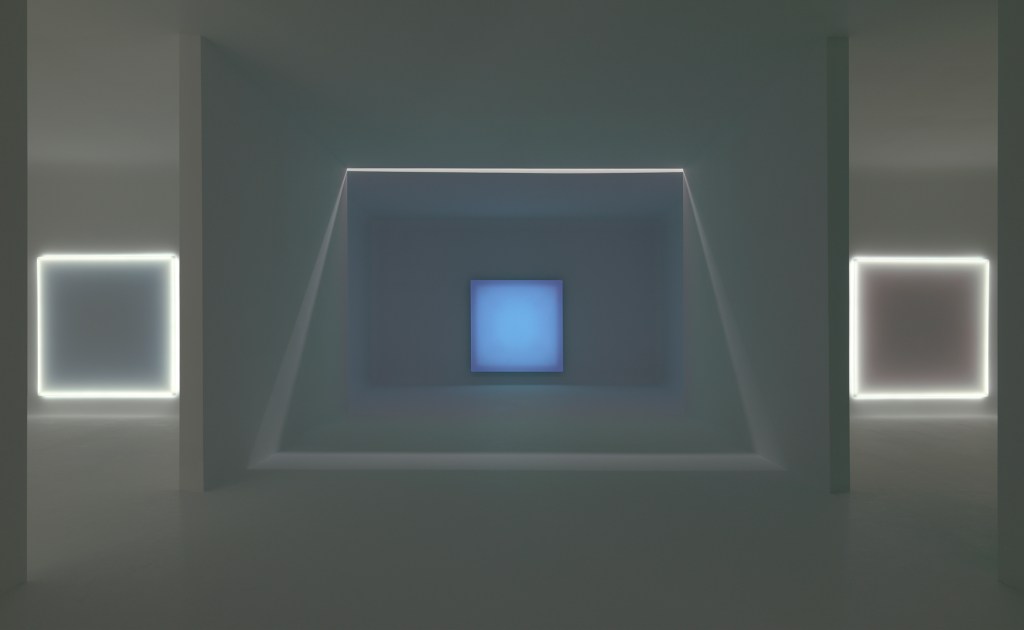On view through March 5 at the David Zwirner in the Chelsea Arts district in New York City, is Doug Wheeler: Encasements, the artist’s third solo show with the gallery. (The gallery has represented the artist since 2011.) The exhibit is the most comprehensive showing of the artist’s work, and includes five “encasements,” including a not-often seen “center light” work. Organized in an open layout, visitors have the opportunity to see these individual artworks in a comprehensive setting and in relationship to one another. The setting enables guests to fully appreciate “…and to compare the distinct luminous atmospheric effects and subtle tonal variations that characterize each of them [the artworks].” Prior to this installation, no more than two of Wheeler’s encasements were been shown together at the same time.
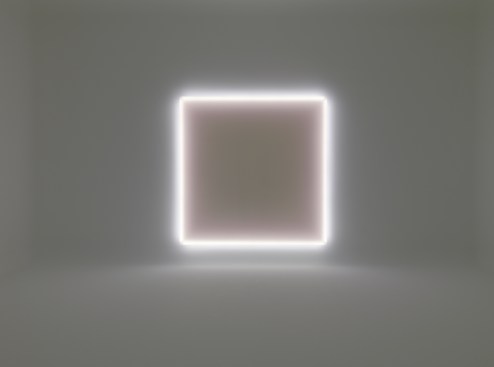
© 2016 Doug Wheeler; courtesy David Zwirner, New York/London
Untitled, 1968/2014 Vacuum-formed acrylic, sprayed lacquer on acrylic, electronic transformer, and daylight neon 90 1/2 x 90 1/2 x 5 inches (229.9 x 229.9 x 12.7 cm)
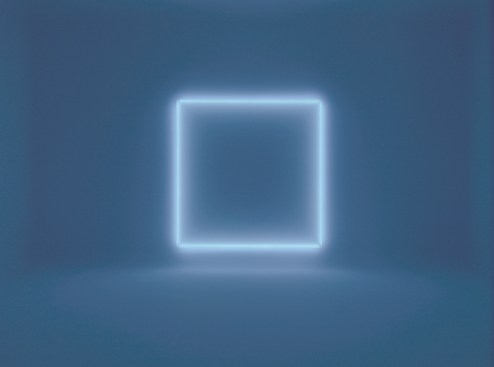
© 2016 Doug Wheeler; courtesy David Zwirner, New York/London
Untitled, 1969/2014 Vacuum-formed acrylic, sprayed lacquer on acrylic, electronic transformer, and white UV neon 90 1/2 x 90 1/2 x 5 inches (229.9 x 229.9 x 12.7 cm)
Wheeler (b. 1939) is one of the pioneering artists associated with the Light and Space movement that originated in Los Angles in the 1960s and 1970s. Wheeler is particular noted for his “…innovative constructions and installations that manipulate the perception and experience of space, volume, and light.” His first “light encasements” were conceived between 1967 and 1969 and stemmed from his work with fabricated acrylic and neon. The encasements are constructed form large panels of vacuum-formed plastic with neon lighting embedded along the inside edges. The pieces are displayed in a white room devoid of all architectural detail and ambient light. In this setting “…the light paintings appear to dematerialize, immersing viewers in a luminous space where light seems to have almost particulate mass.”
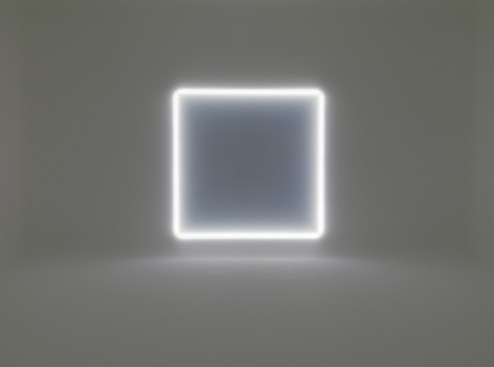
© 2016 Doug Wheeler; courtesy David Zwirner, New York/London
Untitled, 1969/2014 Vacuum-formed acrylic, sprayed lacquer on acrylic, electronic transformer, and daylight neon 90 1/2 x 90 1/2 x 3 inches (229.9 x 229.9 x 7.6 cm)
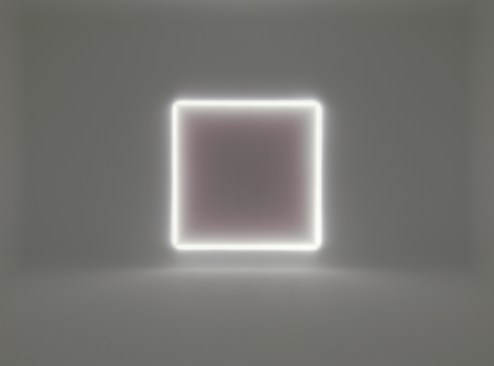
© 2016 Doug Wheeler; courtesy David Zwirner, New York/London
Untitled, 1969/2014 Vacuum-formed acrylic, sprayed lacquer on acrylic, electronic transformer, and daylight neon 90 1/2 x 90 1/2 x 3 inches (229.9 x 229.9 x 7.6 cm)
Wheeler has only made 20 encasements of this type along with two center light encasements, one of which is part of the collection of the Orange County Museum of Art in Newport Beach, Calif., and the other which is on view at the David Zwirner gallery for the first time ever to the public. With the “center encasements,” the neon light blossoms from the center of the panel rather than the edges.
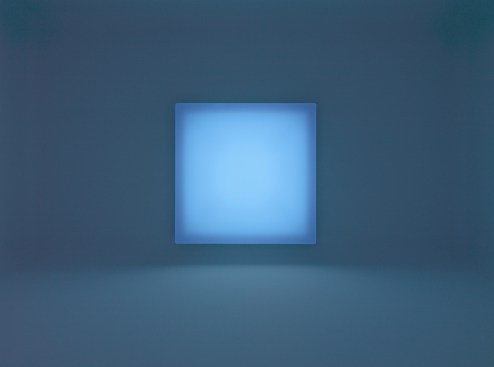
© 2016 Doug Wheeler; courtesy David Zwirner, New York/London
Untitled, 1968/2015 Vacuum-formed acrylic and polycarbonate, electronic transformers, white UV neon, and aluminum frame 90 1/2 x 90 1/2 x 9 inches (229.9 x 229.9 x 22.9 cm)
Viewing each encasement, individually and together, visitors are treated to a challenge to the senses. The artworks appear to float off the walls and as one’s eyes adjust to the low-light conditions and the luminous effect of the neon, it appear as if a light fog is slowly rising from the floor. Other-worldly in its feel, the exhibit suspends viewers in time as one considers what is real and what is imagined, what is physically present and what is perceived in this phenomenological light journey of the senses.
Doug Wheeler: Encasements, January 23 – March 5, 2016, David Zwirner, 537 West 20th Street, New York.
